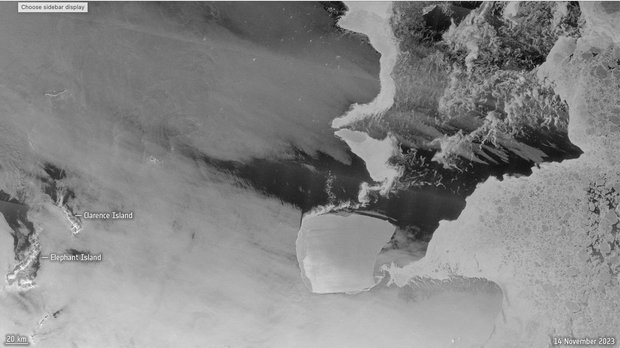The world’s largest iceberg, A23a, which has an area approximately three times the size of New York City, weighs in at almost 1 trillion tons, CBS News partner network BBC News reports, citing data from the European Space Agency (ESA). Using data from the agency’s CryoSat-2 mission, a spacecraft that carries a type of radar able to sense how much of an iceberg’s mass is above the water, scientists have been able to work out information about how much is below the water.
A23a broke off from Antarctica in 1986 and almost immediately got stuck after a deep section of it grounded on the seafloor. Recently, it became dislodged and started drifting again.
European Space Agency
“Over the last decade, we have seen a steady 2.5m (about 8 feet) per year decrease in thickness, which is what you would expect given the water temperatures in the Weddell Sea,” Andy Ridout, a scientist from University College London and the Natural Environment Research Council Centre for Polar Observation and Modelling, told CBS News partner network BBC News.
On the move once more, it’s still unclear where A23a will be carried by wind and ocean currents. The enormous iceberg has reached the tip of the Antarctic Peninsula, where a number of different currents converge.
It’s expected to drift through an area known as “iceberg alley,” the BBC said, and its track will affect whichever part of the ocean and ocean floor it travels over.
Iceberg’s are “responsible for very deep mixing of seawater,” Mike Meredith, a professor from the British Antarctic Survey, told the BBC.
“They churn ocean waters, bringing nutrients up to the surface, and, of course, they also drop a lot of dust. All this will fertilize the ocean. You’ll often see phytoplankton blooms in their wake.”
Thanks for reading CBS NEWS.
Create your free account or log in
for more features.

